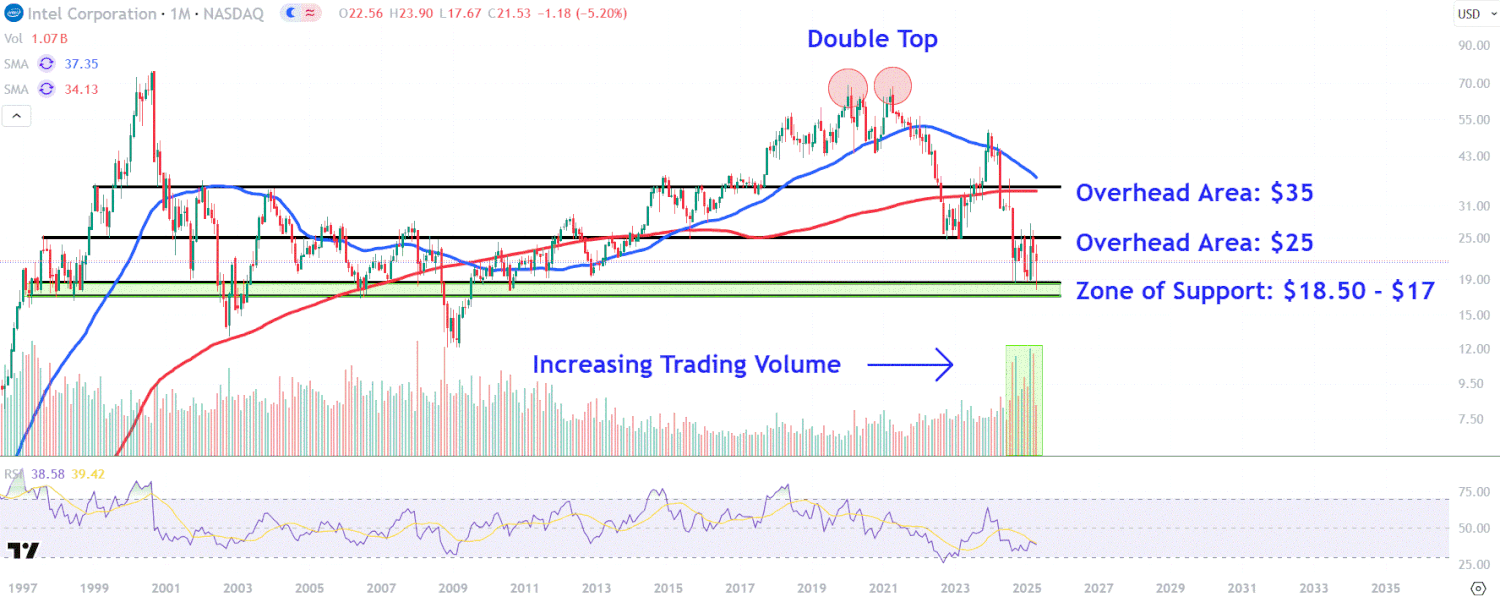Updated on April 9th, 2025 by Nathan Parsh
At first glance, PennantPark Floating Rate Capital (PFLT) is very appealing to income investors. That’s because PennantPark has a staggering 13.4% dividend yield. In addition, unlike many of its competitors, the company has managed to raise its dividend per share for two consecutive years, following a stagnant dividend for the previous seven years.
PennantPark is one of approximately 140 stocks in our coverage universe with a 5%+ dividend yield. Click here to see the entire list of 5%+ yielding stocks.
Not only that, but PennantPark also pays its dividends each month. This allows investors to compound their wealth even more quickly than a stock that pays a quarterly or semi-annual dividend.
There are currently 76 monthly dividend stocks. You can download our full Excel spreadsheet of all monthly dividend stocks (along with metrics that matter like dividend yield and payout ratio) by clicking on the link below:
But, as is so often the case with sky-high dividend yields, PennantPark’s attractive dividend yield may be too good to be true.
This article will discuss the company’s business model and whether the payout is sustainable over the long term.
Business Overview
PennantPark is a Business Development Company, or BDC. It provides mostly debt financing, typically first-lien secured debt, senior notes, second-lien debt, mezzanine loans, or private high-yield debt. It specializes in making debt investments in middle-market companies. To a lesser extent, it also makes preferred and common equity investments. The most recent balance sheet showed that 90% of the company’s total investments were in first-lien senior secured debt.


Source: Investor Presentation
The company’s portfolio is highly diversified, with no particular industry making up more than 8% of the total mix, and the majority comprising less than 3% of the total.
In addition, the company’s portfolio has a floating rate, which opens up its yields to interest rate volatility. This can be good in times of rising rates but is unfavorable should rates decline.
An overview of the company’s investment philosophy reveals PennantPark prefers middle-market companies with $15 million to $50 million in annual EBITDA and has a high rate of underwriting success.
Only two of the company’s ~160 investments reached the non-accrual stage in the most recent quarter, compared to less than 20 of its investments since inception. PennantPark’s track record of outstanding underwriting is a key advantage, and this outstanding credit quality has helped the company maintain its dividend at the same rate for several years.


Source: Investor Presentation
Above is a sampling of the types of investments the company makes in target companies. Not only are the targets themselves from diverse industries and geographies, but PennantPark has a variety of instruments with which to make its investments.
First-lien secured debt is the preferred instrument given its favorable repayment position, but the company will do revolvers and equity injections as well. This is primarily a floating debt investment firm, however.
Growth Prospects
PennantPark has a track record of successful investments. However, its exposure to floating-rate instruments has caused its average portfolio yield to fall over the past several years. The yield on PennantPark’s portfolio peaked at just over 9% at the end of 2018, but the company faced declines in the subsequent years.
As PennantPark’s portfolio is comprised of floating rate instruments – mostly tied to LIBOR – it benefits when interest rates are increasing. Low rates over the past decade suppressed the company’s investment income, but the potential for higher rates is a future catalyst. To an extent, that has come true in 2022-2023 with rising rates.
The company reported its financial results for the first quarter of the fiscal year 2025 on February 11th, 2025. The company’s investment portfolio reached $2.2 billion, with net assets at $962.7 million and a GAAP net asset value per share of $11.34, reflecting a slight improvement of $0.03 per share from Q4 2024. The company’s regulatory debt-to-equity ratio stood at 1.4x, and its debt investments had a weighted average yield of 10.3%. PFLT achieved a net investment income of $30 million during this period, translating to $0.37 per share. Core net investment income was $0.33 per share.
The company continued to actively invest in middle-market loans actively, deploying $607 million in new investments and realizing $26.7 million from sales and repayments. Its portfolio consisted of 159 companies with an average investment size of $13.8 million. Additionally, PennantPark Senior Secured Loan Fund I LLC (PSSL), an unconsolidated joint venture, saw its investment portfolio grow to $1.046 billion, with investments in 118 companies at a weighted average yield of 11.4%.
Total expenses more than doubled to $37 million, driven by higher debt-related costs and base management fees.
Dividend Analysis
PennantPark pays a monthly distribution of $0.1025 per share. The stock has a very attractive annualized dividend yield of 13.4%. Even better, it makes monthly dividend payments, so investors receive their dividends more frequently than they would on a quarterly schedule.
Related: The 10 Highest Yielding Monthly Dividend Payers
However, it is also important to assess whether the dividend is sustainable. Abnormally high dividend yields could indicate that the dividend is in danger. We would expect a BDC to have a high yield, but the more than 13% yield is high even by BDC standards.
PennantPark Floating Rate also has a highly leveraged balance sheet and a payout ratio that often nears or exceeds 100% of earnings. While the company can probably sustain this model while the economy is running smoothly—as the stable dividend over the past decade has shown—it may collapse if the economy experiences a significant and prolonged downturn that causes its loans to underperform.
Despite an increase in 2023, shareholders should certainly not expect a distribution increase in the near term given how close the payout is to earnings today. PennantPark’s ability to grow its portfolio and average yields while controlling expenses will determine if the distribution is sustainable.
The company’s NII is expected to cover distributions this year, but just barely given that the projected payout ratio is 93%. Thus, we aren’t expecting a dividend cut, but add that if credit quality deteriorates, or if rates move down, PennantPark’s earnings will suffer and a dividend cut may become a reality. We note this hasn’t happened yet, but risks have risen for PennantPark given the way its portfolio is constructed with floating-rate instruments. Rates remain stable at the moment, but could be cut if growth slows. However, we don’t see the dividend as being at risk of being cut today. That said, it’s something investors should monitor continuously.
Final Thoughts
The old saying “high-risk, high-reward” seems to apply to PennantPark. It certainly has an attractive dividend yield on paper, but if interest rates move lower, there could be dividend concerns down the road.
If everything goes according to plan, the stock’s yield alone could generate nearly double-digit total returns on an annual basis.
The company faces an elevated level of risk. If PennantPark does not grow investment income, it could be forced to reduce the dividend at some point in the future, but we do not currently forecast that.
Still, investors should tread carefully, and only those with a higher risk tolerance should consider buying PennantPark despite the very high yield.
Don’t miss the resources below for more monthly dividend stock investing research.
And see the resources below for more compelling investment ideas for dividend growth stocks and/or high-yield investment securities.
Thanks for reading this article. Please send any feedback, corrections, or questions to [email protected].




























